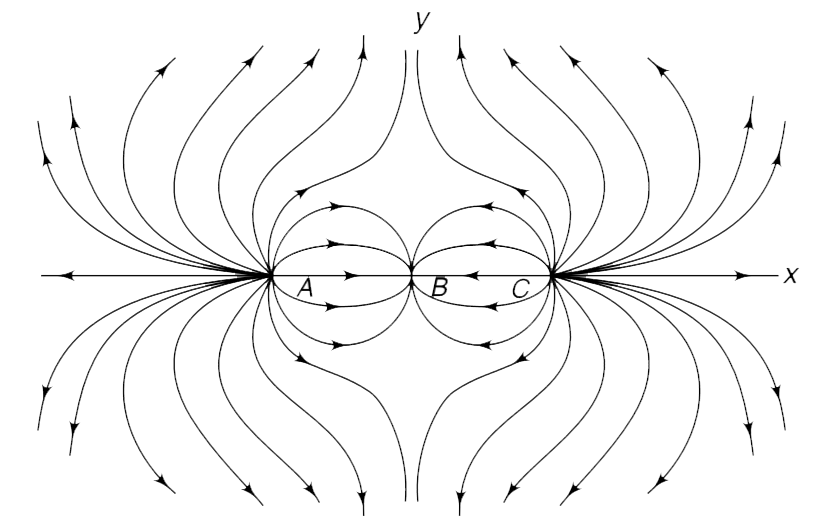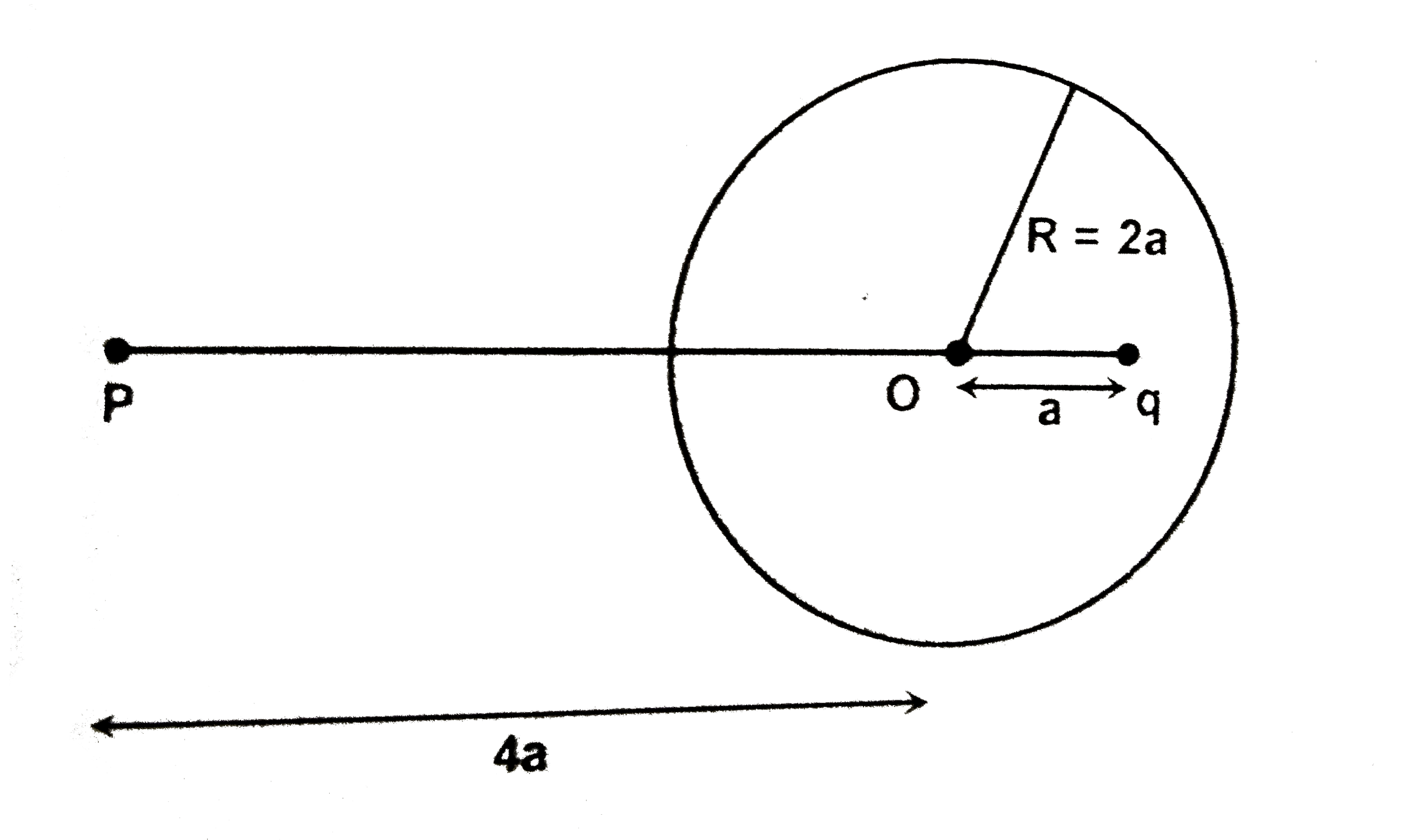A thin spherical conducting shell of radius R has a charge q. Another charge Q is placed at the centre of the shell. The electrostatic potential at a point P a distance R2 from the centre of the shell is
2Q4πε0R−2q4πε0R
2Q4πε0R+q4πε0R
(q+Q)4πε02R
2Q4πε0R
The correct Answer is:B

Potential due to point charge
V1=Q4πε0(R2)
Potential due to shell at inside point
V2=VR2=Vsurface
V2=q4pε0R
Vtotal=2Q4πε0+q4πε0R
Topper's Solved these Questions
Similar Questions
A spherical conducting shell of inner radius r1 and outer radius r2 has a charges 'Q' A charges 'q' is placed at the centre of the shell.
What is the surface charges density on the (i) inner surface (ii) outer surface of the shell?
(b) A spherical conducting shell of inner radius r1 and outer radius r2 has a charges 'Q' A charges 'q' is placed at the centre of the shell.
Write the expression for the electric field at a point x>r2 from the centre of the shell.
View SolutionA spherical conducting shell of inner radius r1 and outer radius r2 has a charge Q.
(a) A charge q is placed at the centre of the shell. What is the surface charge density on the inner and outer surfaces of the shell ?
View Solution
Knowledge Check
A thin spherical conducting shell of radius R has a charge q. Another charge Q is placed at the centre of the shell. The electrostatic potential at a point P a distance R2 from the centre of the shell is
A2Q4πε0R−2q4πε0RB2Q4πε0R+q4πε0RC(q+Q)4πε02RD2Q4πε0RA conducting shell of radius R carries charge −Q. A point charge +Q is placed at the centre. The electric field E varies with distance r (from the centre of the shell) as
A B
B C
C D
D
A spherical shell of radius R has a charge +q units. The electric field due to the shell at a point
Ainside is zero and varies as r−1 outside itBinside is constant and varies as r−2Cinside is zero and varies as r−2 outside itDinside is constant and varies as r−1 outside it
A spherical conducting shell of inner radius r1 and outer radius r2 has a charge Q.
A charge q is placed at the centre of the shell. Find out the surface charge density on the inner and outer surface of the shell.
Is the electric field inside a cavity (with no charge ) zero. Independent of the fact wheather the shell is spherical or not ? Explain.
View SolutionA conducting shell has inner radius R and outer radius 2R. A charge + q is given to the spherical shell. (a) Find the electric field at a point which is at a distance x from the centre of the shell. Give your answer for three cases (i) x lt R (ii) R lt x lt 2R (iii) x gt 2R (b) Find the electric potential in all the three cases mentioned in (a) (c) Find field and potential in all the three cases mentioned in (a) after a point charge – q is introduced at the centre of the shell. (d) Write the electrical potential energy of the system consisting of the shell and the point charge at its centre. (e) Find the electrostatic force that the shell exerts on the point charge. (f) Now, another point charge + q is placed at a distance 4R from the centre of the shell. Find electric field and potential in following cases. (i) x lt R (ii) R lt x lt 2R

View SolutionA point charge Q is placed inside a conducting spherical shell of inner radius 3R and outer radius 5R at a distance R from the centre of the shell. The electric potential at the centre of the shell will be
View Solution
A point charge q'q is placed at distance 'a' from the centre of an uncharged thin spherical conducting shell of radius R=2a. A point 'P' is located at a distance 4a from the centre of the conducting shell as shown. The electric potential due to induced charge on the inner surface of the conducting shell at point 'P' is
View SolutionA metallic spherical shell of radius R has a charge -Q on it. A point charge +Q is placed at the centre of the shell. Which of the graphs shown below may correctly represent the variation of electric field E with distance r from the centre of shell ?
View Solution

